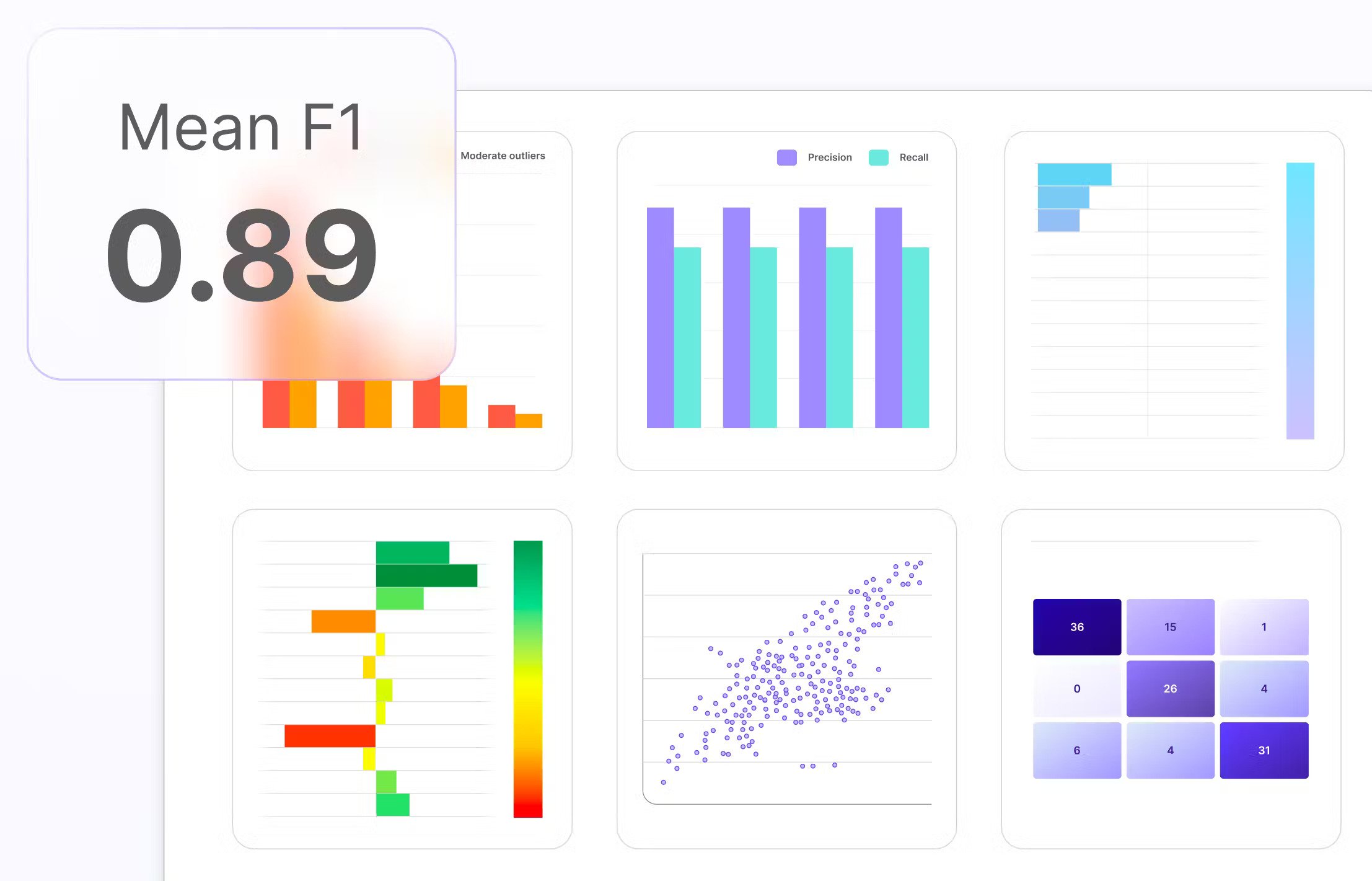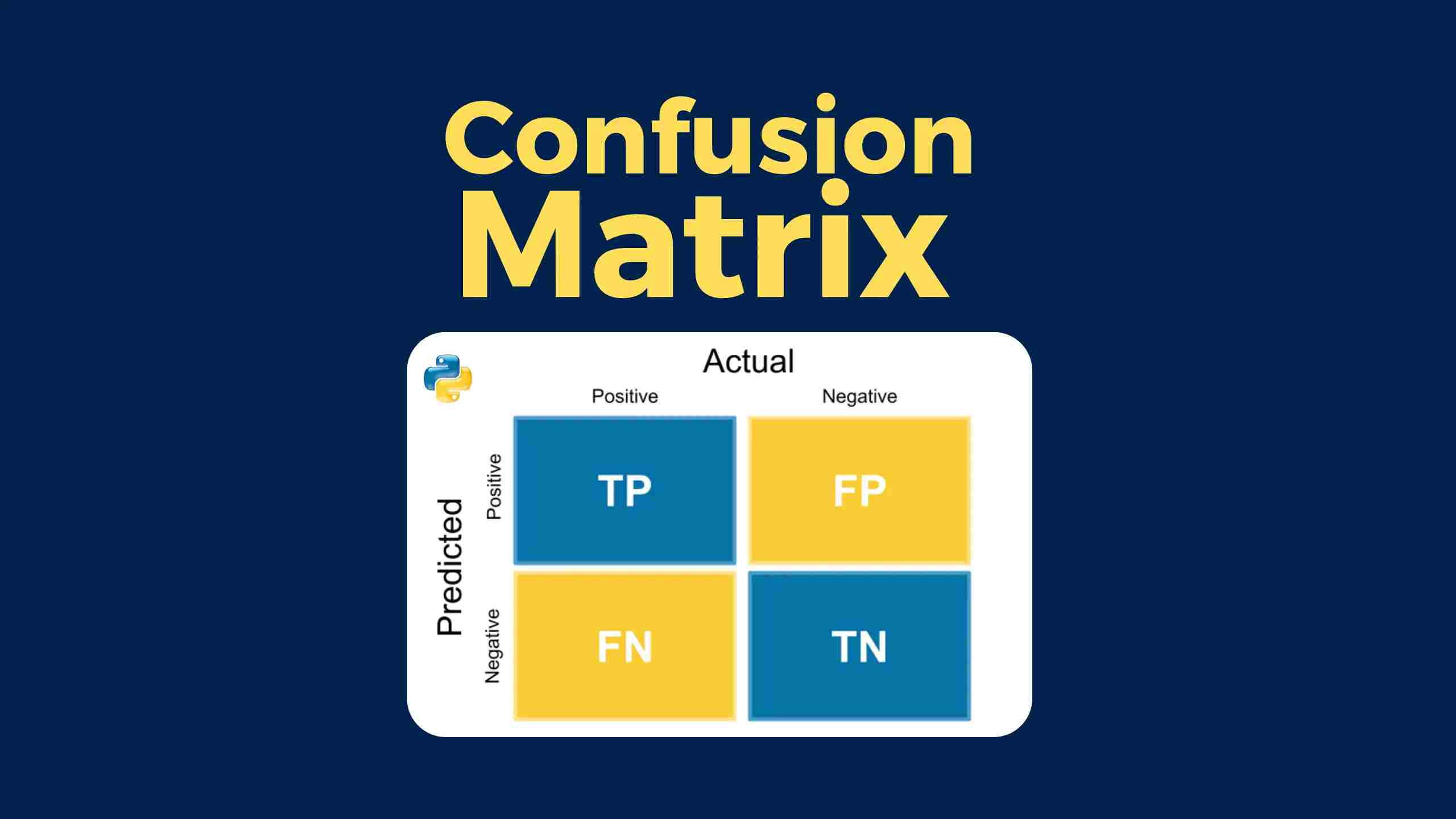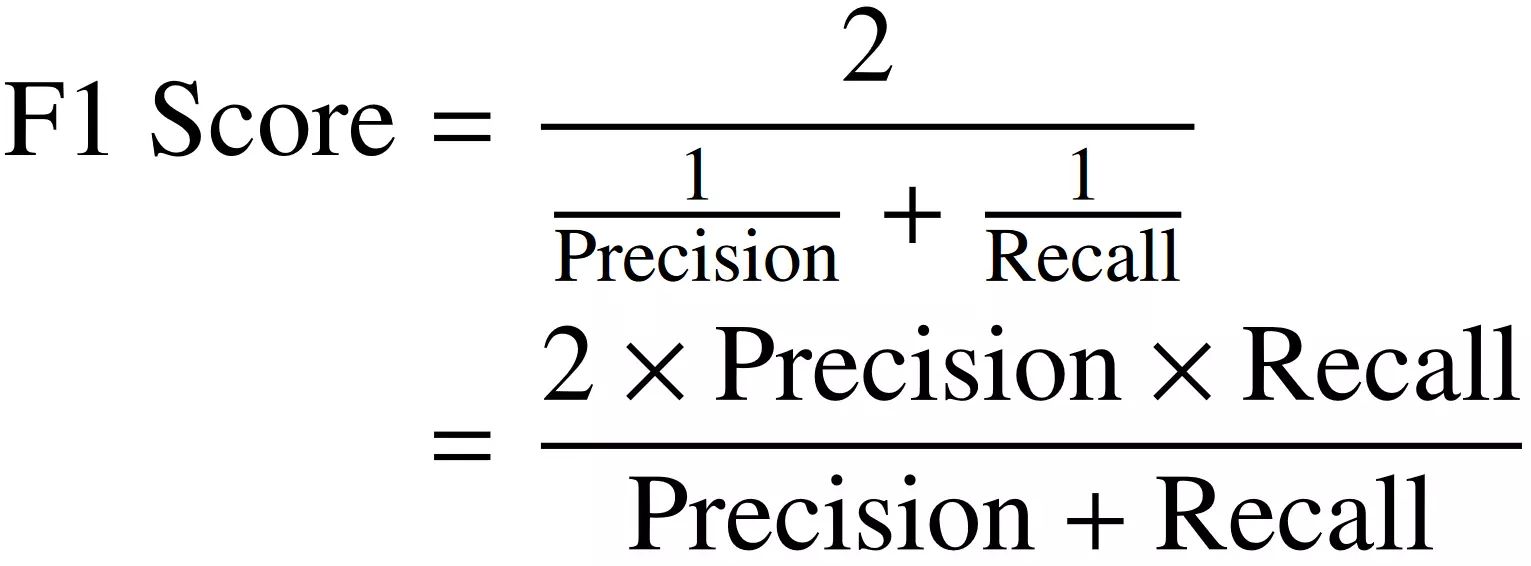Introduction
Machine learning has revolutionized various industries by enabling computers to learn from data and make accurate predictions or decisions. However, like any other technology, machine learning is not perfect and can sometimes produce incorrect results. One such common occurrence is the concept of “False Positives” in machine learning models.
False positives are often associated with binary classification problems, where the model predicts that a certain condition is true when it is, in fact, false. In other words, a false positive is an error made by the model where it incorrectly identifies an instance from the negative class as belonging to the positive class. This can have significant implications in many real-world scenarios.
False positives can arise in various domains, such as medical diagnosis, spam filtering, fraud detection, and security systems. Detecting diseases, identifying spam emails, or flagging fraudulent transactions are tasks where false positives can lead to serious consequences. Therefore, understanding false positives and mitigating their impact is crucial for the effective utilization of machine learning models.
False positives can undermine the trust and reliability of machine learning models. When users encounter frequent false positives, they may lose confidence in the system’s abilities, making it less reliable for decision-making. Additionally, false positives can also lead to wasted resources, as human intervention may be required to verify and handle the incorrect predictions.
Reducing false positives is a challenging task that requires a combination of careful model design, feature engineering, and data preprocessing. Machine learning practitioners and researchers constantly strive to develop techniques and algorithms that minimize false positive rates.
In this article, we will delve deeper into the concept of false positives in machine learning. We will discuss their definition, their importance and impacts in various domains, as well as techniques that can be employed to reduce false positives. By understanding and effectively mitigating false positives, we can enhance the performance and reliability of machine learning models across different applications.
Definition of False Positive
Before we delve into the intricacies of false positives in machine learning, it is essential to establish a clear understanding of what this concept entails.
A false positive occurs when a binary classification model predicts a positive outcome for an instance that, in reality, belongs to the negative class. In simpler terms, it is an error made by the model where it incorrectly identifies an instance as belonging to the positive class when it should have been classified as negative.
To illustrate this with a practical example, let’s consider a medical imaging scenario. Suppose we have a machine learning model trained to detect cancerous tumors. If the model predicts that a patient has cancer (positive class) when they are actually healthy (negative class), it is a false positive. The model falsely indicates the presence of cancer when there is none.
False positives can also be seen in other domains such as spam filtering. Imagine an email classification system that wrongly marks legitimate emails as spam. This classification error would result in false positives, where the system incorrectly categorizes a non-spam email as spam.
False positives introduce an element of uncertainty and can have significant implications depending on the context. For instance, in the medical field, false positives can cause unnecessary stress and anxiety for patients, leading to further unnecessary medical procedures. In cybersecurity, false positives in intrusion detection systems can result in excessive alerts and waste valuable time and resources of security professionals investigating false threats.
It is important to note that the concept of false positives is intrinsic to the nature of machine learning models. It is virtually impossible to eliminate false positives entirely, but the goal is to minimize their occurrence and understand their impact in different applications.
In the next sections, we will explore the importance of false positives in machine learning, examine examples of false positives, investigate their causes, explore the impacts they can have, and discuss techniques to reduce their occurrence.
Importance of False Positive in Machine Learning
False positives play a crucial role in machine learning and have significant implications in various domains. Understanding the importance of false positives is essential for improving the accuracy and reliability of machine learning models. Let’s explore why false positives matter in the realm of machine learning.
1. Impact on Decision Making: False positives can lead to incorrect decisions and actions based on erroneous predictions. In fields such as healthcare, finance, and security, where decisions have real-life consequences, relying on inaccurate information can be detrimental. By accurately identifying and reducing false positives, machine learning models can help in making better-informed decisions.
2. Resource Allocation: False positives can waste valuable resources. For instance, in fraud detection systems, false positives can trigger unnecessary investigations, consuming time and effort of fraud analysts. By minimizing false positives, companies can allocate their resources more efficiently and focus on genuine cases.
3. User Trust and Satisfaction: False positives can erode user trust in machine learning systems. If a spam filter wrongly categorizes essential emails as spam, users may begin to lose confidence in the email classification system. Building trust with users is crucial for the adoption and success of machine learning applications, and reducing false positives is pivotal in achieving this trust.
4. Legal and Ethical Considerations: False positives can have legal and ethical consequences. For example, in criminal justice systems, if a predictive model incorrectly identifies someone as a suspect based on false positives, it can lead to wrongful accusations and unjust actions. It is essential to ensure the fairness and accuracy of machine learning models to prevent any biases or discrimination arising from false positives.
5. Improved Efficiency: Minimizing false positives enhances the efficiency of systems and processes. By reducing false positives, machine learning models can filter out noise and provide more accurate results, saving time and effort in manual verification or investigation tasks.
Overall, false positives impact decision making, resource allocation, user trust, legal and ethical considerations, and system efficiency. By recognizing the importance of false positives, we can focus on developing techniques and strategies to address this issue effectively. In the following sections, we will explore examples of false positives, examine their causes, and discuss techniques to minimize their occurrence in machine learning models.
Example of False Positive
To gain a deeper understanding of how false positives can occur in machine learning, let’s consider an example in the context of sentiment analysis.
Suppose we have a sentiment analysis model trained to classify movie reviews as either positive or negative. The goal is to predict the sentiment expressed in the text accurately. However, due to the complexity and subjectivity of human language, false positives can occur.
In this scenario, a false positive would be when the model incorrectly classifies a neutral or negative review as positive. For instance, consider the following movie review:
“The film had a mediocre plot and weak character development.”
In this case, the sentiment expressed in the review is negative, as it indicates dissatisfaction with the plot and character development. However, if the sentiment analysis model mistakenly labels this review as positive, it would be a false positive.
This example demonstrates how false positives can lead to inaccurate interpretations of sentiment. Such errors can have consequences in applications like brand reputation monitoring or product recommendation systems.
Imagine a company relying on sentiment analysis to monitor customer feedback. If the sentiment analysis model incorrectly categorizes negative feedback as positive, the company may falsely assume that customers are satisfied when they are not. This can lead to missed opportunities for improvement and damage customer relationships.
It is important to note that false positives can vary in severity, depending on the specific task and its implications. While the example above pertains to sentiment analysis, false positives can occur in other domains such as disease diagnosis, where misclassifying a patient as positive when they are healthy can cause unnecessary treatments and anxiety.
Understanding and identifying examples of false positives highlight their impact on the accuracy and reliability of machine learning models. It underscores the need to develop techniques that can effectively reduce false positive rates and improve the overall performance of machine learning systems.
Causes of False Positive
False positives can arise from various factors in machine learning models. Identifying and understanding the causes of false positives is crucial for developing effective strategies to mitigate their occurrence. Let’s explore some common causes of false positives.
1. Noise in Data: The presence of noisy or inconsistent data can contribute to false positives. If the training data contains mislabeled instances or ambiguous examples, the model may learn incorrect patterns, leading to inaccurate predictions. Removing or reducing the impact of noisy data through data preprocessing techniques can help alleviate false positives.
2. Imbalanced Classes: Imbalance between the positive and negative classes in the training data can contribute to false positives. When the positive class is significantly outnumbered by the negative class, the model may have a tendency to predict most instances as negative, resulting in false positives for the positive class. Techniques such as oversampling or undersampling can be employed to address class imbalance and reduce false positives.
3. Complex Decision Boundaries: In scenarios where the decision boundary between classes is intricate or overlapped, models may make errors and produce false positives. When instances from the negative class are closer to the decision boundary, the model may misclassify them as positive. Ensuring sufficient model complexity and considering more sophisticated algorithms can help improve the model’s ability to capture complex decision boundaries accurately.
4. Feature Selection and Representation: Inaccurate or insufficient features can lead to false positives. If the selected features do not adequately capture the distinguishing characteristics between classes, the model may struggle to differentiate them correctly, resulting in higher false positive rates. Conducting thorough feature analysis and engineering can enhance the discriminatory power of features and reduce false positives.
5. Overfitting: Overfitting occurs when a model becomes too specialized to the training data and fails to generalize to unseen data. In such cases, the model may memorize noise or irrelevant patterns in the training data, leading to false positives in the test or deployment phase. Regularization techniques, such as adding regularization terms or collecting more diverse training data, can help combat overfitting and reduce false positives.
6. Model Thresholds: The decision threshold used to classify instances can influence false positive rates. If the threshold is set too low, the model may be more prone to false positives by being overly liberal in classifying instances as positive. Adjusting the decision threshold or incorporating techniques like Receiver Operating Characteristic (ROC) curves can help determine an optimal threshold and mitigate false positives.
It is important to note that the causes of false positives can vary depending on the specific application and dataset. By identifying the underlying causes, machine learning practitioners can develop targeted solutions to address false positives and improve the overall performance and accuracy of their models.
Impacts of False Positive
False positives in machine learning can have significant impacts across various domains and applications. Understanding the consequences of false positives is crucial for evaluating the reliability and effectiveness of machine learning models. Let’s explore the impacts that false positives can have.
1. Misguided Decisions: False positives can lead to misguided decisions and actions based on inaccurate predictions. For example, in medical diagnosis, a false positive may result in unnecessary medical procedures or treatments for patients who are actually healthy. Such incorrect decisions can have physical, emotional, and financial implications for individuals.
2. Resource Wastage: False positives can waste valuable resources, including time, manpower, and financial resources. In applications like fraud detection, false positives can trigger unnecessary investigations, consuming the time and efforts of fraud analysts. Reducing false positives allows for better allocation of resources to genuine cases, improving efficiency and reducing costs.
3. User Trust and Satisfaction: False positives can erode user trust in machine learning systems or applications. If users continuously encounter false positives, they may lose confidence in the system’s ability to provide accurate and reliable results. Building trust with users is crucial in domains like customer service or security, where users rely on the system’s predictions.
4. Legal and Ethical Concerns: False positives can have legal and ethical repercussions. In criminal justice systems, a false positive identification based on machine learning predictions can lead to wrongful accusations and unjust actions against innocent individuals. Ensuring the fairness and accuracy of machine learning models is crucial to prevent any biases or discrimination that may arise from false positives.
5. System Performance: False positives can impact the overall performance of a system or application. If a spam filtering system incorrectly classifies legitimate emails as spam, it can lead to important emails being missed or filtered out. This can result in a degraded user experience and reduced system effectiveness.
6. Negative Psychological Effects: False positives can induce stress, anxiety, or confusion, especially in sensitive domains like medical or security-related applications. For example, receiving a false positive cancer diagnosis can cause significant emotional distress for patients and their families. Minimizing false positives is important to protect individuals from unnecessary psychological burdens.
It is crucial to recognize and address the impacts of false positives to ensure the successful deployment and utilization of machine learning models. By reducing false positives, we can enhance decision-making accuracy, resource allocation efficiency, user trust, legal compliance, and overall system performance.
Techniques to Reduce False Positive
Reducing false positives is a key objective in machine learning to improve the reliability and accuracy of models. Numerous techniques have been developed to mitigate the occurrence of false positives. Let’s explore some effective techniques that can help reduce false positives in machine learning models.
1. Threshold Adjustment: Adjusting the decision threshold of a classification model can significantly impact false positive rates. By increasing the threshold, the model becomes more conservative in classifying instances as positive, resulting in fewer false positives. Care should be taken to strike a balance, as excessively high thresholds could lead to higher false negative rates.
2. Data Preprocessing: Preprocessing techniques can play a crucial role in reducing false positives. Cleaning the data by removing outliers, handling missing values, and addressing class imbalance can minimize the noise and improve the quality of the dataset. Additionally, feature scaling and normalization can ensure that features have a consistent impact on predictions, reducing the chances of false positives.
3. Feature Engineering: Developing and selecting relevant features can improve a model’s ability to distinguish between classes and reduce false positives. Careful analysis of the domain and problem at hand can help identify informative features that better capture the underlying patterns. Additionally, creating derived features or transforming existing ones can provide a better representation of the data, reducing false positives.
4. Algorithm Selection: Different machine learning algorithms have varying capabilities in handling false positives. Some algorithms, like support vector machines or decision trees, may naturally have lower false positive rates due to their inherent decision boundary characteristics. Experimenting with different algorithms and comparing their performance in terms of false positives can help identify the most suitable algorithm for a specific problem.
5. Regularization Techniques: Regularization methods, such as L1 or L2 regularization, can help prevent overfitting and mitigate false positives. Regularization introduces a penalty for complex models, discouraging them from memorizing noise or irrelevant patterns in the training data. By avoiding overfitting, regularization improves generalization and reduces false positives.
6. Post-processing Techniques: Applying post-processing techniques can further refine predictions and reduce false positives. Techniques like ensembling, where multiple models are combined, or utilizing techniques like gradient boosting or bagging, can improve the overall robustness and accuracy of the predictions. Additionally, calibration methods can adjust model outputs to better reflect the true probabilities, helping mitigate false positives.
7. Ongoing Monitoring and Model Updates: Regularly monitoring and updating models based on new data can help identify and rectify false positives. With evolving datasets and changing patterns, models that were initially effective may become outdated. Continuously evaluating model performance and updating it accordingly can help reduce false positives and ensure the model remains reliable over time.
By incorporating these techniques into the machine learning workflow, practitioners can effectively reduce false positives and enhance the performance and reliability of their models. It is important to remember that the choice of techniques depends on the specific problem and available resources, and a combination of these techniques may be necessary to achieve optimal results.
Conclusion
False positives are an inherent challenge in machine learning models and can impact decision-making, resource allocation, user trust, and system performance. Understanding false positives is crucial for improving the accuracy and reliability of machine learning models.
In this article, we have explored the definition of false positives, their importance in machine learning, and their impacts on various domains. We have also discussed the causes of false positives and techniques that can be employed to reduce their occurrence.
By addressing the causes of false positives, such as noise in data, class imbalance, complex decision boundaries, inadequate feature selection, overfitting, and inappropriate thresholds, we can improve the performance of machine learning models and mitigate false positives.
Data preprocessing, feature engineering, algorithm selection, regularization techniques, threshold adjustment, and post-processing techniques are among the strategies that can be employed to reduce false positives. It is essential to choose the appropriate techniques based on the specific problem and available resources.
Continuously monitoring model performance, incorporating new data, and remaining vigilant in identifying and rectifying false positives are essential practices to ensure the reliability and effectiveness of machine learning models over time.
Reducing false positives enhances the accuracy and efficiency of machine learning systems, builds user trust, reduces resource wastage, and ensures fair and ethical decision-making. It is a continuous journey of improvement and refinement in the field of machine learning.
By being aware of the challenges presented by false positives and implementing appropriate strategies, we can leverage the power of machine learning to make informed decisions, improve workflows, and achieve more reliable and accurate results across various applications.

























